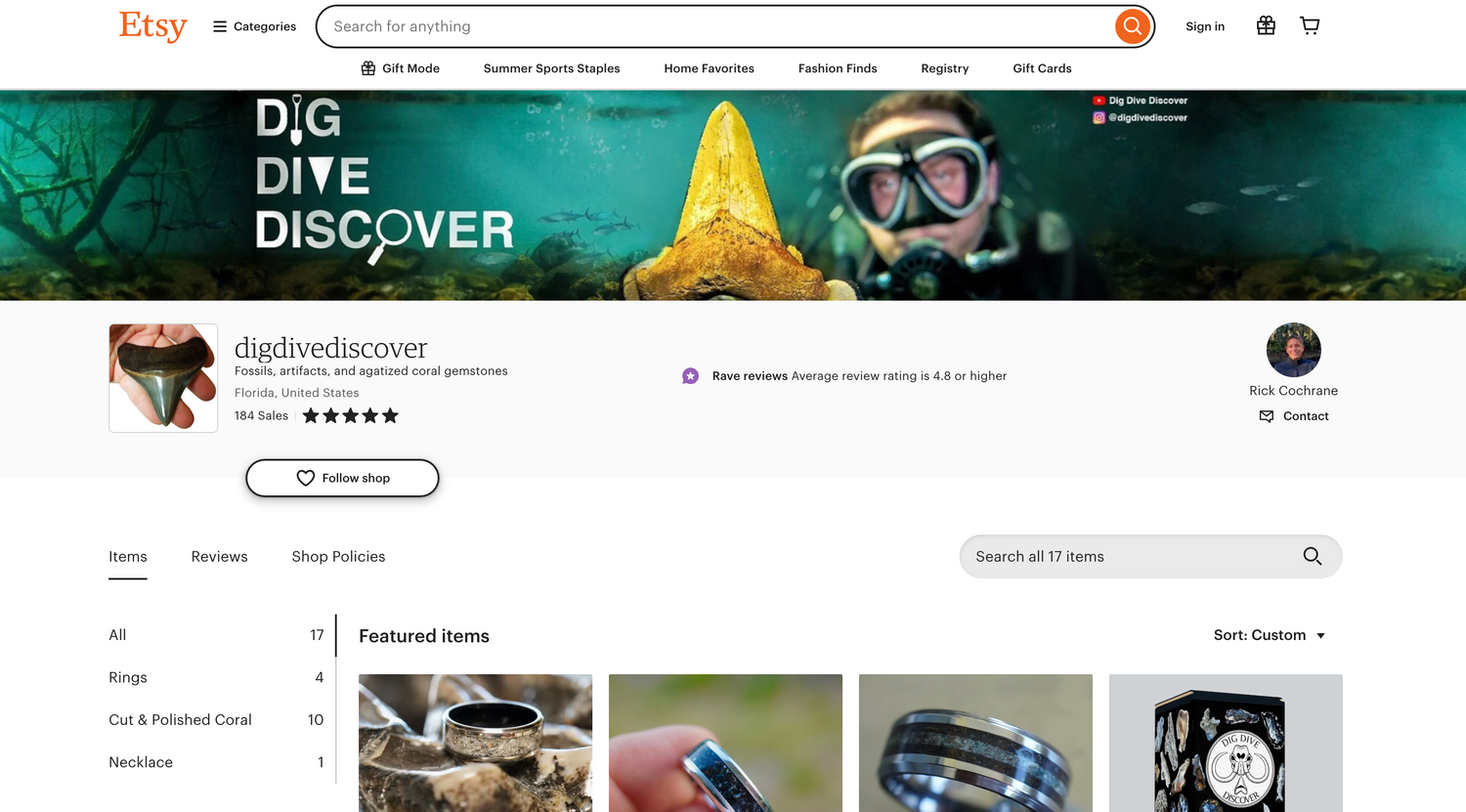
Etsy Store
View a wider selection on our Etsy store. For our most premium selection, visit "The Vault"
About Agatized Coral
SW Florida is famous for its silicified marine fossils from the Tampa Bay Member of the Arcadia Formation, dating to the Miocene Epoch of the Cenozoic Era. These marine fossils include extinct species of corals (both hard and head corals), gastropods, and pelecypods. Many of the remains have been replaced with chalcedony and common opal. Colors range from red, orange, amber, the rarest of them all, black and blue. Most of the chalcedony gets its color from the presence of mineral impurities such as iron and manganese, as well as organics that produce the rare black hues.
The fossils date to the Oligocene Epoch of the Cenozoic Era (estimated to be around 30 to 25 million years ago). During this time, sea levels dropped just enough to allow for the development of patchy reefs. Other marine animals, such as sea snails and pelecypods, also found their home here. Over time, due to environmental changes, the corals died off. Over the next several million years, their remains were buried by sediments rich in silica, introduced by watersheds from river deposits originating in the Appalachian Mountains and from decaying sponges and other organisms. As silica-rich groundwater formed and produced clay-rich beds, the coral and shells underwent a cell-by-cell replacement of their original calcium carbonate structure with silica through a process called permineralization, which took millions of years. Corals with hollow chambers inside were filled with a saturated silica gel, which, over time, produced beautiful geodes of botryoidal chalcedony. If enough space and silica were available, the silica could organize into drusy quartz crystal habits that sparkle handsomely.
The corals found here were collected by diving in deeper waters. These types of corals have not been extensively studied due to their depth and the skills required to obtain them. We are currently undertaking research in partnership with several museums and institutions. Many of the corals and shells found in these deeper waters contain rarer colors, such as blue and black. These colors are the result of organic sea life breakdown and saltwater intrusion. Historically, these colors were rare because most land-based fossil finds formed in groundwater at higher elevations due to a drop in sea level during the Miocene Epoch. Opal is also found inside geodized corals. The Tyndall effect is responsible for various colors depending on the layering density of opal and chalcedony, with blue being the most common.
Other secondary minerals have historically been found inside coral geodes, such as calcite. However, recent discoveries by our team of divers include the mineral pyrite.
One hypothesis suggests that pyrite formed due to intrusions of clay-rich sediments containing sulfates from organic breakdown. Much of the clay found inside coral geodes has a sulfurous odor. Further studies are needed to verify this hypothesis.
Another recently discovered mineral is hematite, which occasionally coats drusy quartz, resulting in an iridescence. Many of the corals from diving sites phosphoresce due to the presence of organic acids embedded in the layers of chalcedony and opal. Agate banding is sometimes only visible under UV radiation.
